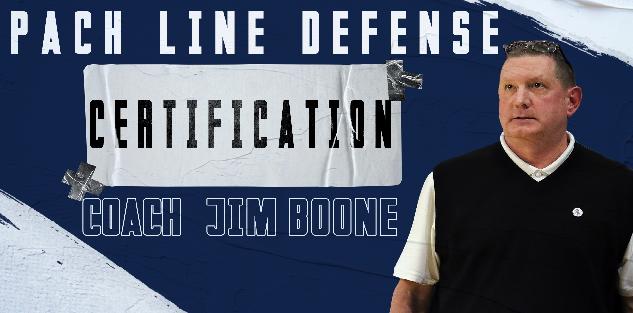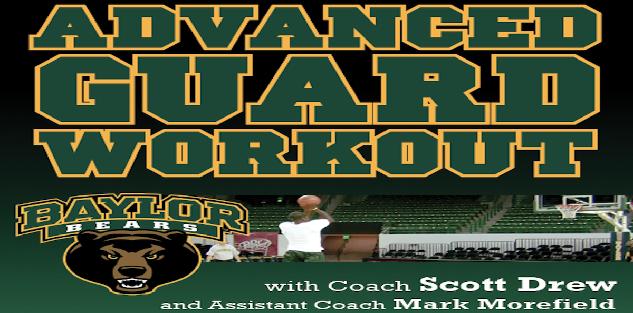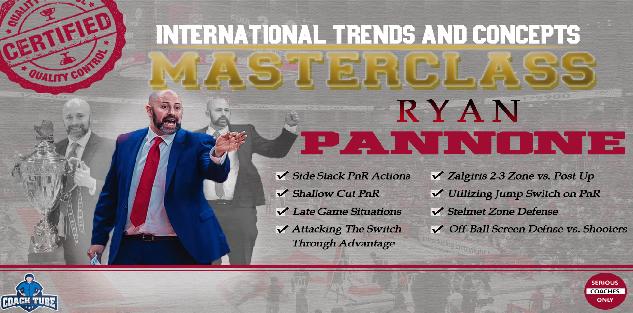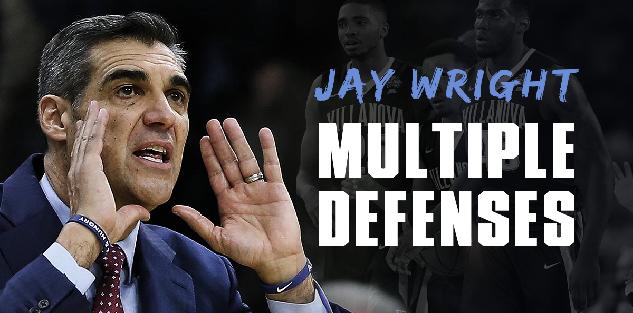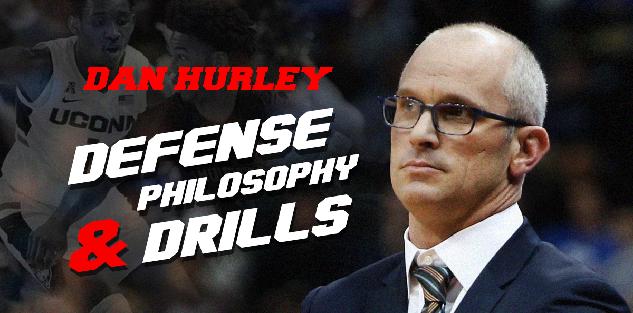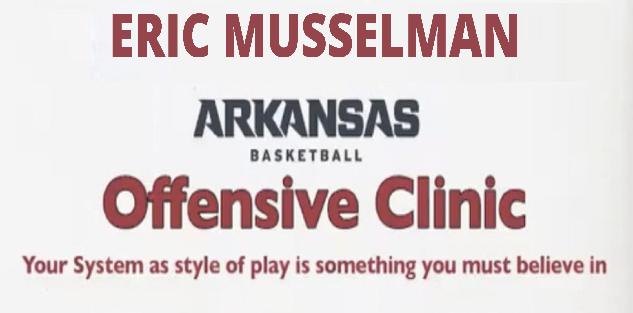Featured courses
- Two Great Game Situational Workouts For the Basketball Offseason by Grant Young
- Two Reads Basketball Players Must Understand Before Executing the Ball-Screen by Grant Young
- Two of LSU Coach Kim Mulkey’s Game-Winning Inbounds Plays by Grant Young
- Three Effective Early-Season Defensive Basketball Drills by Grant Young
- Four Essential Tips For Basketball’s 1-3-1 Zone Defense by Grant Young
- Four Zone Defense Drills to Strengthen Your Team by Grant Young
- How to Beat the Three Most Common Pick and Roll Coverages by Grant Young
- Two Drills to Improve Shooting at the Start of the Basketball Season by Grant Young
- Core Basketball Principles That Dallas Mavericks Coach Sean Sweeney Teaches by Grant Young
- Three Competitive Shooting Drills For Your Basketball Team by Grant Young
- How To Teach The ‘I’ Generation of Basketball Players by Grant Young
- Three Elite Drills to Begin a Basketball Practice With by Grant Young
- How to Build a Championship-Winning Basketball Team Culture by Grant Young
- Two of Texas Women’s Basketball Coach Vic Schaefer’s Tips For Team Culture by Grant Young
- Atlanta Dream WNBA Coach Brandi Poole’s Four Sets for Secondary Offense by Grant Young
- NC State Basketball Coach Brett Nelson’s 4 Crucial Point Guard Qualities by Grant Young
- Kentucky Coach Mark Pope’s Five Guard Rules For Offense by Grant Young
- McNeese State Basketball Coach Will Wade’s 4 Core Pillars by Grant Young
- 4 Tips To Instantly Improve Your Free Throw Shooting by Tyler Linderman
- Assemble a Championship-Caliber Basketball Rotation by Brandon Ogle
- Two of UConn Coach Dan Hurley’s Key Defensive Drills by Grant Young
- Four Post Moves All Basketball Forwards Should Have In Their Bag by Grant Young
- Four of Baylor Coach Nicki Collen’s Midseason Pick and Roll Adjustments by Grant Young
- WNBA Legend Sue Bird’s Two Tips For Attacking on Offense by Grant Young
- Houston Coach Kelvin Sampson’s Three Keys for Building a Basketball Program by Grant Young
- Two of Tom Izzo’s Top Michigan State Defensive Drills by Grant Young
- Four of Olympic Gold Medalist Coach Mechelle Freeman’s Relay Race Strategies by Grant Young
- Three Key Strategies Will Wade Uses to Build a Dominant Team by William Markey
- Five UConn Huskies Men’s Basketball Plays That You Can Use by Grant Young
- Three Tips for Maintaining Team Culture at the End of a Basketball Season by Grant Young
- Three Dribble Drive Motion Drills to Teach Your Basketball Team by Grant Young
- Three Dribbling Drills For Non-Primary Ball Handlers by Grant Young
- Four Advanced Ball Handling Drills For Basketball Guards by Grant Young
- Three Tips to Sharpen Your Post Player’s Footwork in Basketball by Grant Young
- These Three Pick and Roll Drills Are Crucial For Any Ball Screen Offense by Grant Young
- Three Closeout Drills to Improve Basketball Shooting Defense by Grant Young
- Three Tips to Perfect the Packline Defense in Basketball by Grant Young
- Four Keys to Executing the Read and React Offense in Basketball by Grant Young
- Three Tips to Develop Elite Basketball Shooters by Grant Young
- Three Crucial Keys to Executing the 5 Out Offense in Basketball by Grant Young
- These Three Offensive Sets Will Help You Beat Any Zone Defense by Grant Young
- Three Transition Basketball Drills To Play With More Pace by Grant Young
- Three 5 Out Offense Drills Any Basketball Coach Can Use by Grant Young
- Four Vital Techniques for a Motion Offense in Basketball by Grant Young
- Three Baseline Inbounds Plays To Win Your Basketball Team Games by Grant Young
- Four Drills For Sharpening the European Ball Screen Offense by Grant Young
- Three Positioning Tricks For a Basketball Zone Offense by Grant Young
- Three Rules to Perfecting Basketball's Lock Left Defensive System by Grant Young
- UCLA WBB Coach Cori Close’s Two Keys to Winning the Mental Game by Grant Young
- Four of Alabama Coach Nate Oats’ Favorite Basketball Drills by Grant Young
- Three Ways To Turn Transition Offense in Basketball Into Points by Grant Young
- Three Drills to Master Basketball's Pack Line Defense by Grant Young
- Three Transition Defense Drills to Halt Fast Breaks by Grant Young
- Four Offensive Rebounding Drills to Win Second Possessions by Grant Young
- 4 Defensive Technique Drills from Boston Celtics Assistant Coach Brandon Bailey by Marek Hulva
- 5 Drills to Improve Ball Handling by Tyler Linderman
- 13 FUNNY BASKETBALL GIFS by Alex
- BASKETBALL SPEED AND AGILITY: 8 QUESTIONS FOR COACHTUBE EXPERT RICH STONER by Jaycob Ammerman
- Defensive Strategies for Basketball by Ryan Brennan
- 4 Keys To Turning Your Program Into Championship Contender By Dallas Mavericks Coach Sean Sweeney by Marek Hulva
- 5 Components to Creating a Winning Basketball Program by Justin Tran
- Guide to Becoming a Lethal Scorer in Basketball by Justin Tran
- Zone Defense In the NBA Eastern Conference Finals by James Locke
- Mastering Court Mobility: Tips for Effective Movement in Basketball by Justin Tran
- 5 Basketball Shooting Drills: How to Develop a Sharpshooter by James Locke
- 6 Points of Emphasis for a Successful 5 Out Offense by Jaycob Ammerman
- Effective and Efficient Methods to Practice During the Basketball Season by Justin Tran
- Three Great Passing Drills From a Basketball Coaching Legend by Grant Young
- 7 Principles For Perfecting the Princeton Offense in Basketball by Grant Young
- How to Replicate A Modern NBA Offense by Grant Young
- Three Great Two-Ball Dribbling Drills For Basketball Development by Grant Young
- Two Rebounding Drills to Win Your Basketball Team Championships by Grant Young
- How to Improve Your Basketball Team’s Defense With the Shell Drill by Grant Young
- How Baylor Basketball’s Scott Drew Develops Elite Guard Play by Grant Young
- Off-Ball Movement Tips and Strategies: Lessons From the NBA Finals by James Locke
- Player Development: Scott Drew’s Tips for Producing NBA Guards by James Locke
- How to Execute a Spread Offense in Basketball by Grant Young
- Four Quality Quotes From Four Final Four Coaches by Grant Young
- A Guide to the Pack Line Defense by Alex Martinez
- 3 Defensive Build Up Drills to Improve Team Basketball Defense by Grant Young
- Battle of Two Great Coaches: Best Plays from the NBA Finals Contenders by Justin Tran
- 10 Creative Ways Athletic Programs Can Use a Video Board to Raise Money by Coach Williams
- How to Use 3 on 3 to Improve Your Basketball Team by Grant Young
- How to Defend the Pick and Roll by Grant Young
- Mastering Basketball Defense: Techniques, Drills, and Strategies for Success by Justin Tran
- Three Tips From The Coach Who Developed Giannis Antetokoumnpo by Grant Young
- 2023 NBA Draft: Skills and Technique from Top Prospects by Justin Tran
- From College to the Pros: Transitioning the Dribble Drive Offense by Justin Tran
- Positionless Basketball: Redefining Roles on the Court by Justin Tran
- Revolutionize Your Offense: Proven Concepts to Elevate Your Basketball Game by Justin Tran
- 5 Essential Fastbreak Drills Every Basketball Coach Should Know by James Locke
- How to Run a Circle Offense in Basketball by Grant Young
- Game-Changing Strategies: ATO Plays in the EuroLeague and Olympics by Justin Tran
- How to Stand Out at Basketball Tryouts by Grant Young
- How to Improve Your Basketball Team’s Transition Defense by Grant Young
- Indiana Fever GM Lin Dunn’s Two Keys For Women’s Basketball Coaches by Grant Young
- Strength Training Strategies Every Basketball Player Should Have by Grant Young
- A WNBA Basketball Coach’s Four Priorities In Transition Defense by Grant Young
- Three Adjustments to Make When Your Basketball Offense Isn’t Working by Grant Young
- Three Pillars to Applying Defensive Pressure on the Basketball Court by Grant Young
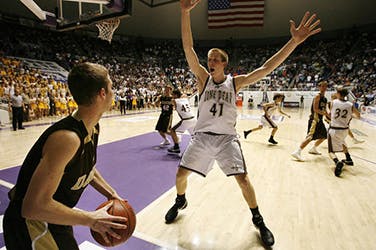
Three Baseline Inbounds Plays To Win Your Basketball Team Games
- By Grant Young
Having a few effective basketball inbound plays is what can set one coach and their team apart from others, and can be the difference between winning and losing games.
Because inbound plays are often used in critical moments of the game, such as the closing seconds of a tight contest or after a timeout, teams need to be practicing these all the time. Well-executed inbound plays can lead to easy scoring opportunities, which can swing the momentum of the game in your team's favor.
It’s also important to have a variety of effective inbound plays that can keep the opposing team guessing and make it more challenging for them to defend against your team's inbound passes. Yet, you don’t want to have too many set plays, because that means less time spent perfecting the few you’re most likely to use in these tight situations.
Despite their importance, many basketball coaches — even very good ones — get some vital things wrong about inbounds plays. Some coaches tend to rely on the same inbound plays over and over again, making it easier for the opposing team to anticipate and defend against them. Failing to tailor inbound plays to exploit mismatches or take advantage of the opponent's defensive tendencies can limit their effectiveness.
Another mistake is not emphasizing proper execution and timing during practice. Inbound plays require precise movements and timing, and if players are not well-drilled in executing them, the plays are less likely to be successful during actual games.
Since there are so many inbounds plays out there, it’s hard to know which ones will work best for your team in which situations. This is why we’ve pulled three elite inbounds plays from three top-tier coaches that you can institute into your offense. While we can’t guarantee your team will finish the play, these plays will give them (and you) a great chance for success.
Kim Mulkey - 11
Kim Mulkey is the head coach of the LSU Tigers women’s basketball team. She is a six-time national champion and has been named National Coach of the Year nine times by various entities, and she was selected as the Big 12 Coach of the Year eight times. Mulkey is also a member of the National High School Hall of Fame, Louisiana High School Hall of Fame, Women’s Basketball Hall of Fame, Baylor Athletics Hall of Fame (2007), and Texas Sports Hall of Fame.
Coach Mulkey’s ‘11’ baseline inbounds play from her ‘Kim Mulkey - Quick Hitters & In Bound Plays’ course is when she has two post players setting a staggered screen, with one player in the paint and another on the ball-side block.
What you want to have is a shooter that’s coming off of that screen that can catch and finish a midrange jump shot along the baseline, because they’re almost guaranteed to get an open look. Because of how clustered it is in the paint plus the two consecutive screens, it’s nearly impossible for that player’s defender to keep up with them enough to contest a shot.
For screeners, they must have their back facing where they want their teammate to get the shot so that they can set as wide (and as legal) of a screen as possible.
If the baseline jumper doesn’t become available after those two screens, then the other guard at the top of the key will set a down screen for the inbounder, who will become open at the top of the key for a three-point shot. If that shot isn’t available, then continue into your normal offense.
Kyle Brown - Need A 3
Kyle Brown is the assistant men’s basketball coach at Saint Mary’s University of Minnesota, a position he has held since the start of the 2016-17 academic school year.
Before he arrived at Saint Mary’s, Brown spent the last three years as the lead assistant at Cornell College. Brown has also spent time as an assistant coach and lead recruiter at St. Norbert College, where the Green Knights won three Midwest Conference regular-season and tournament titles.
If you have a post player who can shoot three-pointers, one of Coach Brown’s plays is an almost guaranteed way to get him an open shot. It involves starting the post player along the baseline or on the wing, who will then set a screen for one of your team’s top guards (ideally one who can shoot). That player will then pretend like they’re heading out to the wing for a shot before turning back around and getting a back screen for the initial post player, who will then go out to the wing and likely receive an open look.
Because the defense’s focus will be on the shooting guard, they’ll likely lose track of the big man who will then flash up to the wing or top of the key for an open look.
Kerry Keating - ‘Gold’ Action

Kerry Keating spent nine seasons in charge of the Santa Clara men's basketball program, leading the Broncos to a pair of postseason appearances.
Keating, who compiled a 139-159 record at the school, led the Broncos to the 2013 College Basketball Invitational postseason tournament title. Keating came to Santa Clara after serving four seasons as an assistant coach at UCLA, helping the Bruins to Final Four appearances in 2006 and `07.
Coach Keating’s ‘Gold’ action will start with the ball being inbounded to a small forward or shooting guard on the wing. The guard who inbounds the ball will then receive a set of staggered screens from the two post players (one on the block and one at the elbow), and get open in the opposite wing for a three-point shot.
And if the shot isn’t open, the post player on the elbow can initiate a pick and roll.

